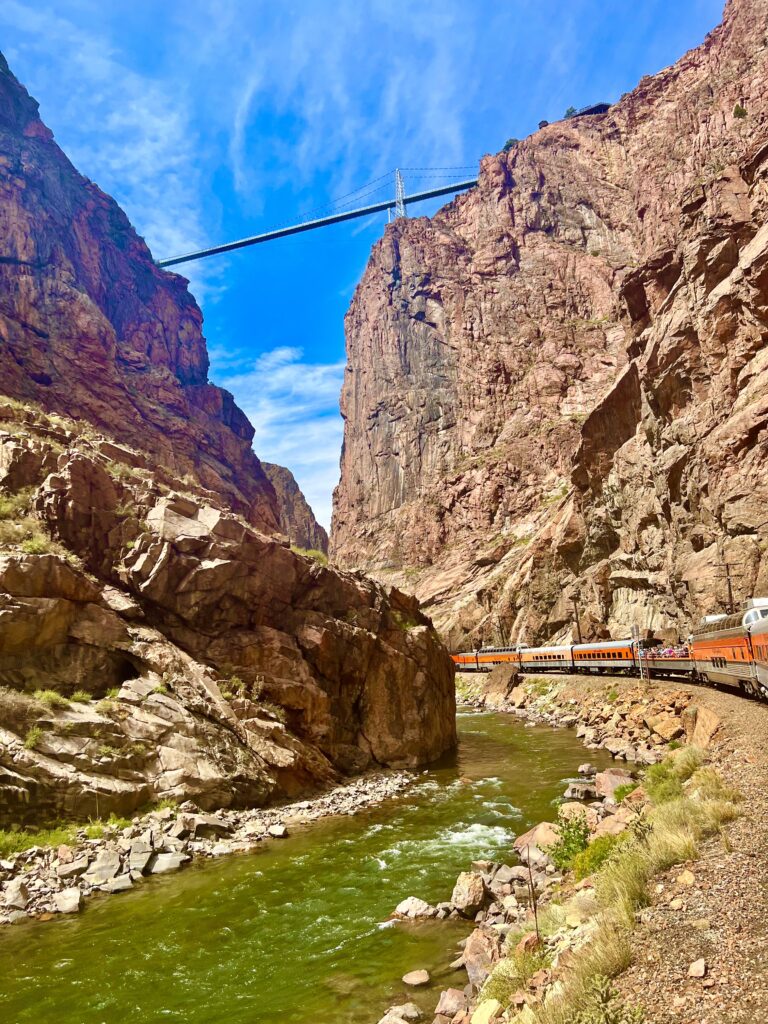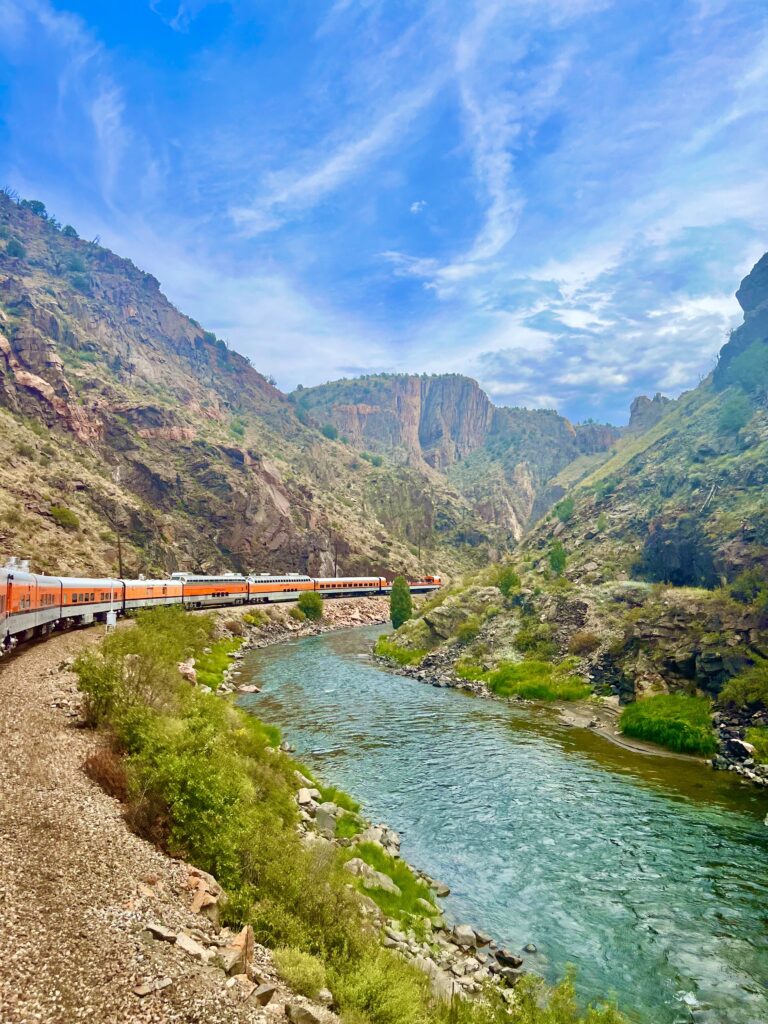If you’re a frequent reader, you already know I’m a fan of railroads, and scenic railroads are no exception. You can find scenic railroads all across America, but no rail fan’s bucket list would be complete, without taking a trip aboard the Royal Gorge Railroad. Located in central Colorado, near the town of Cañon City, the Royal Gorge Railroad benefits not only from its scenic route, but from its fascinating history.
As the name suggests, the Royal Gorge Railroad takes you through the heart of Colorado’s Royal Gorge. I’ve seen my fair share of canyons recently, but the Royal Gorge might be the most unique. I say that because of its dimensions. At it’s deepest point, the Royal Gorge measures 1,250 feet deep, yet stretches only 50 feet across. Who ever came up with the phrase “An inch wide and a mile deep”, might have just seen the Royal Gorge.
Traveling through the canyon is somewhat surreal, because the visual is so unique. President Teddy Roosevelt had it right when he described the Royal Gorge Route as, “The trip that bankrupts the English language.” President Franklin Roosevelt also took a trip through the Royal Gorge, and described it as, “One of the best loved scenic wonders of America.” When FDR rode through the Royal Gorge, he got to see something his cousin didn’t, the recently completed Royal Gorge Bridge. Built in 1929, it was the highest bridge in the world when completed. Soaring 955 feet above the Arkansas River, it remains the highest suspension bridge in the United States.

While the Royal Gorge Railroad gives you access to some amazing scenery, the railroad’s history is just as cool. In 1879, the Atchison, Topeka, and Santa Fe Railway and Denver & Rio Grande Railroad were competing to build a line through the Royal Gorge. The prize, access to Leadville, birthplace of the Colorado Silver Boom. In those days, it wasn’t uncommon for competing railroads, to build separate lines parallel to each other. But given the narrowness of the canyon, there was only room for one railroad through the Royal Gorge. What followed would come to be known as the Royal Gorge War.

Heading into the fight for the Royal Gorge, there was already bad blood between the two railroads. They had just fought a similar battle, competing to lay tracks over Raton Pass, leading into New Mexico. That competition ended with the Atchison, Topeka, and Santa Fe hiring local gunfighters, forcing the Denver & Rio Grande to cede control of the route.
The Royal Gorge War started when the Atchison, Topeka, and Santa Fe rushed a crew to the mouth of the canyon, and began grading for a track bed. The Denver & Rio Grande responded by sending their own crew into the gorge, but they were too late, as ATSF crews had blocked the entrance to the canyon. The Denver & Rio Grande crews responded by building stone forts at the opposite end of the gorge. You have to remember this is 1879, and most of these guys are Civil War veterans, so when I say fort, I don’t mean it figuratively. Locals sympathetic to the Denver & Rio Grande cause, also worked to sabotage the ATSF crews, primarily by rolling rocks into the canyon from above.
While war was being waged by the rank and file, separate wars were being fought in state and federal court. Eventually the dispute reached the United States Supreme Court, which ruled that the Denver & Rio Grande had the right of way to build through the Royal Gorge. But again, given that this was 1879, a Supreme Court ruling had little chance of ending the dispute.
The Atchison, Topeka, and Santa Fe resorted to tactics similar to those they had used during the Raton Pass battle, and hired a bunch of gunfighters, chief among them was one “Doc” Holiday. There were numerous fights between the two railroads, but little actual damage was done. The fighting did lead both sides back to the negotiating table, and in 1880, both railroads signed the “Treaty of Boston.” The right-of-way went to the Denver & Rio Grande, and they compensated Atchison, Topeka, and Santa Fe for the portion of rail they had already constructed through the gorge.

For the sake of brevity, I’ve left out quite a bit of detail. But I’ve always found the Royal Gorge War to be one of the great stories of the American West. Maybe it’s just me, but I’ve always thought the story would make for a pretty good movie. In the meantime, taking a ride aboard the Royal Gorge Railroad, is a pretty great option to experience some of that history. And even if the history doesn’t interest you, the scenic ride through the Royal Gorge, is worth a trip all on its own.

The history of the Royal Gorge War was a great addition to your post. I’m sure the “unabridged” story would make a great Cohen Brothers movie.
Another screenplay for you to write. Can you walk on the royal gorge bridge?
Yes, the bridge is now part of a park. You can walk across the bridge and there’s also a zip line across the canyon. I’m planning on going back in the summer, the river rafting through the canyon looked pretty fun.